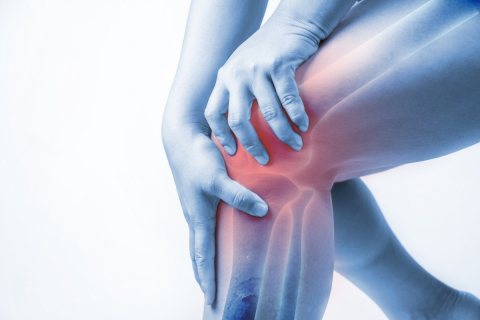Bone cell response to mechanical force is balance of injury and repair

Scientists have revealed the intricate process that bone cells use to repair themselves after mechanical injury, according to a study in the open-access journal eLife.
The research provides new insight on how the body adapts to all kinds of mechanical stresses – from pressure placed on bones during simple walking, to extreme forces experienced during intense exercise.
The mechanical environment is an important determinant of bone health. Gravitational and muscle forces act on the skeleton during physical activity, resulting in a complex combination of forces, strains and pressures. Bone cells in the skeleton adapt to these pressures by translating the mechanical forces into a complex chain of molecular events that allow bones to adapt and repair. Increases in cell levels of calcium and the release of an important molecule called adenosine triphosphate (ATP), considered by biologists to be the energy currency of life, are known to be early events following mechanical stress of bone cells, but exactly how mechanical forces lead to ATP release remained unresolved.
“The goal of our study was to examine the mechanism of ATP release from mechanically stimulated bone cells”, explains lead author Nicholas Mikolajewicz, PhD student at McGill University and Shriners Hospitals for Children® – Canada. “We realized early on that the membrane of bone cells needs to be disrupted to increase calcium levels, and soon after we became interested in how these injuries affect ATP release”.
The team first looked at the timing of ATP release after mechanical injury. Using bone cells from three different sources, they physically stimulated individual cells and found that ATP release occurred within seconds after mechanical stimulation, and that this preceded an increase in calcium levels in neighbouring cells.
Next, they looked at where the ATP was being released from. Since it was previously proposed that it comes from vesicles – tiny membrane sacs within the cell, they used a combination of dyes to measure the release of vesicles and ATP. To their surprise, they found that the more vesicles were released, the less ATP was released after mechanical stimulation.
This led the team to propose a mechanically stimulated ATP release is related to cell membrane injury rather than calcium-driven release from vesicles. To test this, they looked at fluorescent dye leakage from bone cells after different levels of injury. This showed that damage to the membrane was reversible and was repaired in as little as 10 seconds. Importantly, the holes in the membrane were around the right size to allow ATP to escape. This reversible damage was also seen in the bone cells of mice when a force, like that experienced during exercise, was applied to the shin bone.
Finally, the team looked at exactly how this membrane repair takes place. They found that the release of tiny vesicles, controlled by an influx of calcium that switched on a molecule called protein kinase C (PKC), is important for membrane repair. Taken together, their results indicate that membrane injury causes ATP spillage from the cell, but then rapid membrane repair – controlled by calcium- and PKC-dependent vesicles – limits the total amount of ATP spilled and ultimately determines the fate of the bone cells.
“We have established a novel mechanism used by bone cells to adapt to mechanical forces,” concludes senior author Svetlana Komarova, Associate Professor at McGill University and Shriners Hospitals for Children – Canada®. “Our finding that PKC controls this response provides a potential avenue to explore for treatments for those experiencing altered mechanical environments, such as people with paralysis or astronauts in space.”
The paper ‘Mechanically-stimulated ATP release from murine bone cells is regulated by a balance of injury and repair’ can be freely accessed online at https://doi.org/10.7554/eLife.37812. Contents, including text, figures and data, are free to reuse under a CC BY 4.0 license.
Media contacts
Emily Packer, Senior Press Officer
eLife
e.packer [at] elifesciences.org
01223 855373
Caroline Phaneuf
Communications & Marketing
Shriners Hospitals for Children – Canada
cphaneuf [at] shrinenet.org
+1-514-778-5092
About eLife: https://elifesciences.org/about.

